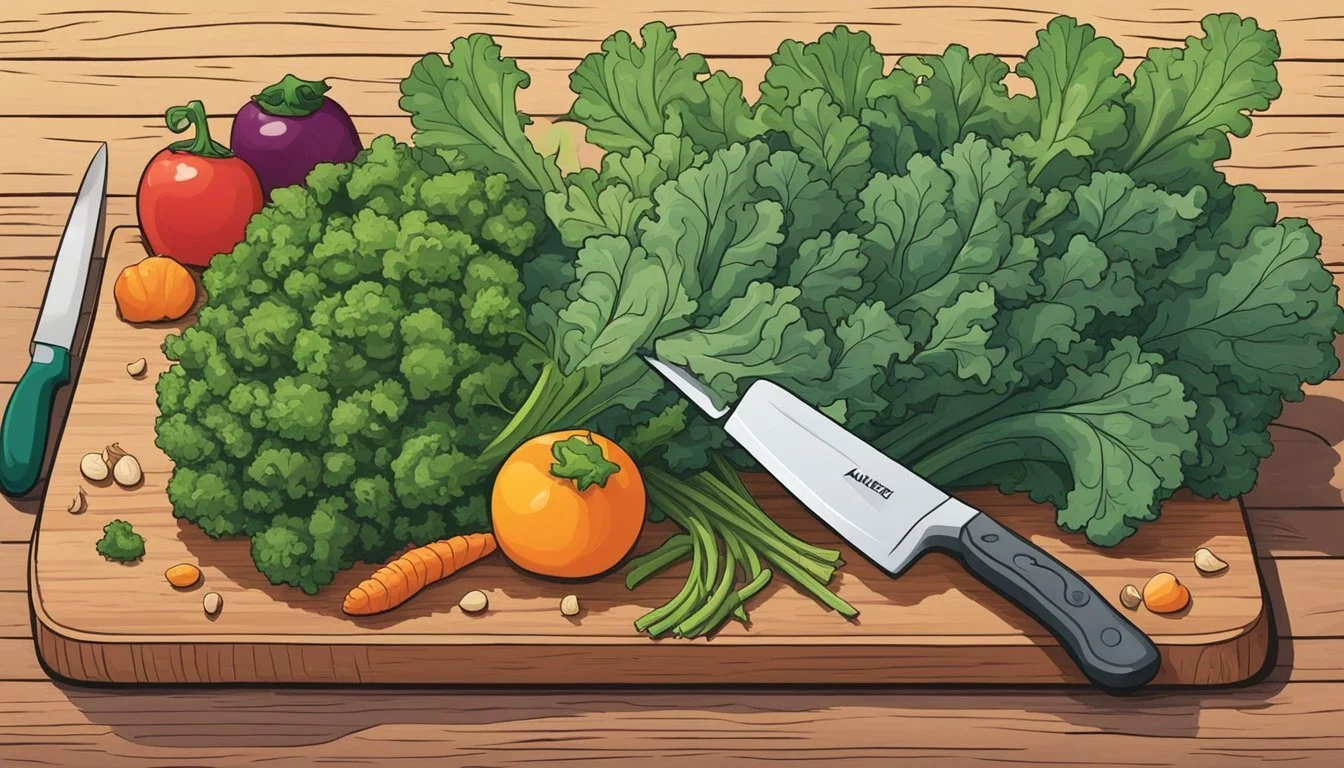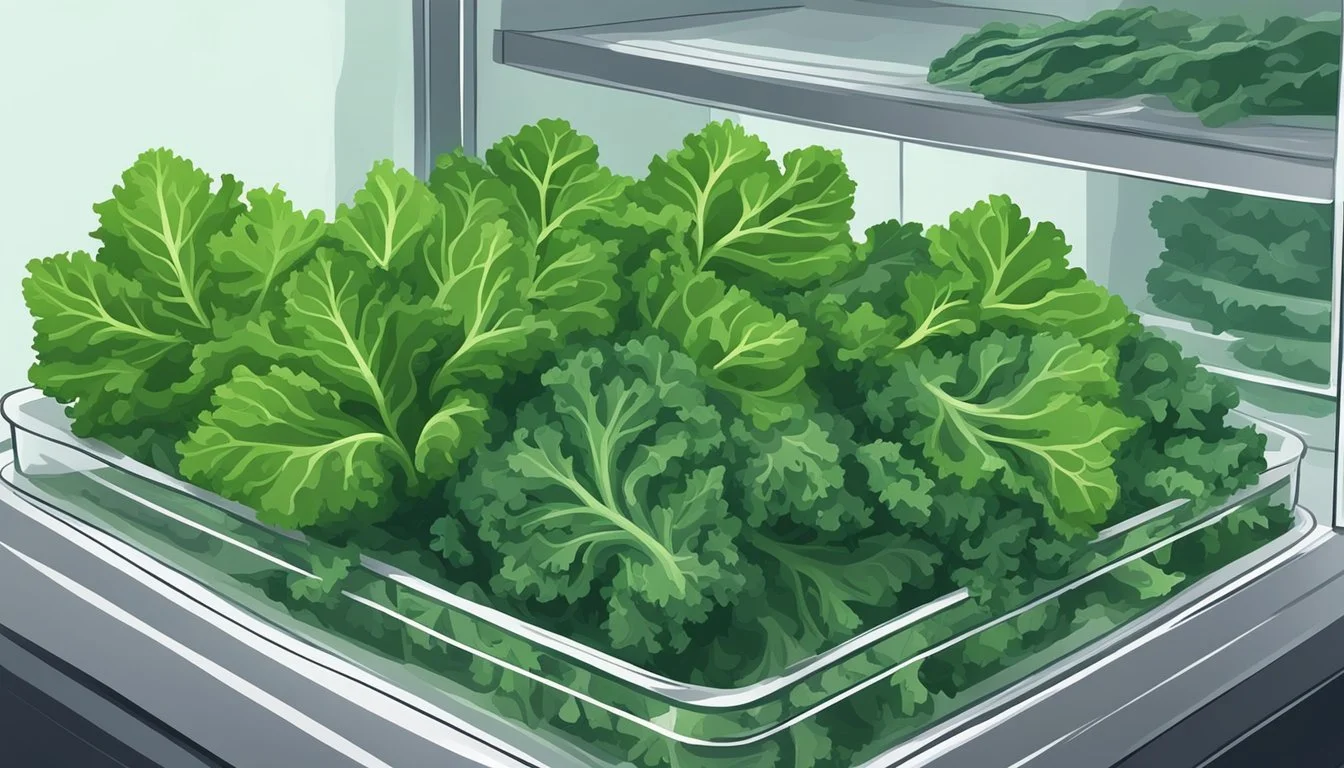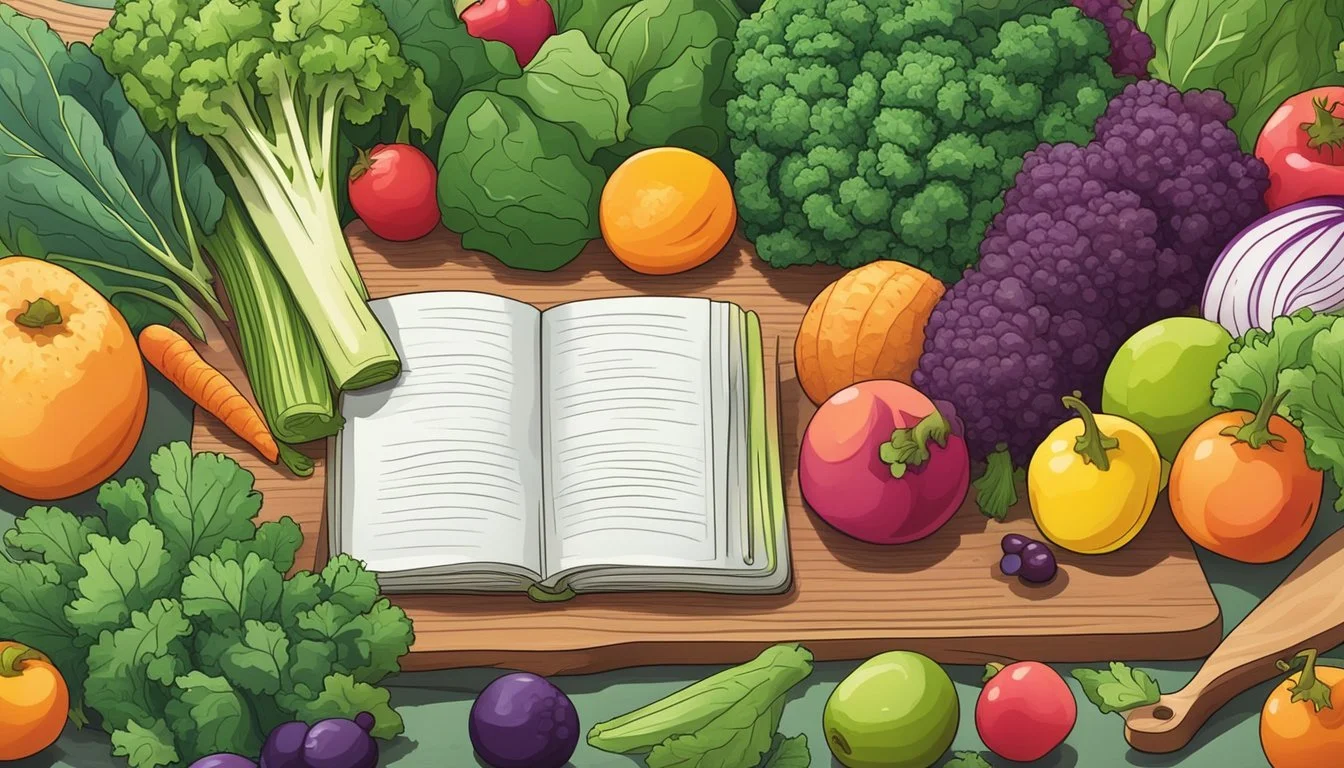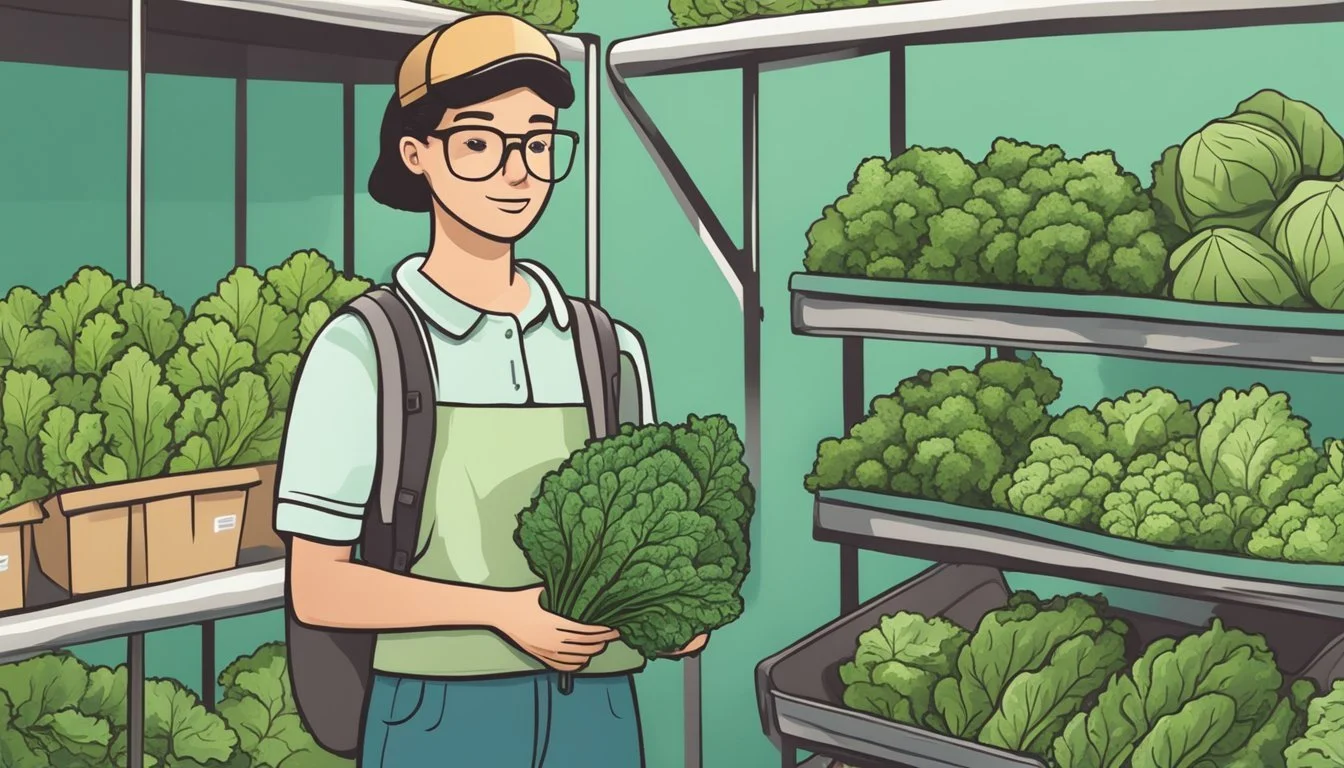Does Kale Go Bad?
Tips for Identifying Spoilage
Kale is a powerful leafy green, packed with vitamins, fiber, and antioxidants, making it a staple in many health-conscious diets. Like any fresh produce, kale can go bad, and knowing how to identify its freshness is crucial. Kale that shows signs of sliminess, discoloration, or a foul odor has gone bad and should be discarded.
Fresh kale is usually vibrant green and crisp to the touch. Over time, it can develop black or brown spots, become limp, or take on a slimy texture, indicating spoilage. Proper storage is essential to extend its shelf life, and keeping it refrigerated can help maintain its nutritious qualities like vitamin C, vitamin K, iron, and other essential nutrients.
Understanding the signs of spoilage not only ensures you're consuming fresh produce but also helps in making the most of this nutrient-dense vegetable within your diet. Cooking or freezing kale right after purchase can also help in retaining its freshness for a longer period.
Understanding Kale
Kale is a nutrient-dense vegetable known for its versatile use in various dishes and its remarkable health benefits. This section explores the popular varieties of kale and delves into its nutritional value and key health benefits.
Popular Varieties of Kale
Curly Kale: This is the most common type, recognized by its bright green, ruffled leaves. It has a slightly peppery and bitter flavor, making it a favorite for salads and smoothies.
Lacinato Kale: Also known as dinosaur or Tuscan kale, this variety features dark blue-green leaves with a bumpy texture. It has a sweeter, milder taste compared to curly kale and is often used in soups and stews.
Red Russian Kale: Identified by its flat, fringed leaves with a reddish-purple tinge, this type is tender and has a slightly sweet flavor. It's excellent for raw consumption in salads or light sautéing.
Nutritional Value and Health Benefits
Kale is packed with vitamins and minerals, serving as a powerhouse of nutrition in a low-calorie package. It is particularly rich in vitamin C, vitamin K, and iron.
Vitamin C: Boosts the immune system and improves skin health.
Vitamin K: Essential for blood clotting and bone health.
Iron: Vital for blood health and oxygen transport.
High in antioxidants, kale helps combat oxidative stress and inflammation in the body. It also provides substantial amounts of fiber, which aids in digestion and can support weight management. Incorporating kale into a balanced diet can significantly contribute to overall health and wellness.
Storing Kale Properly
Proper storage can significantly extend the freshness of kale. This guide covers techniques for refrigerating and freezing kale to maintain its quality and nutritional value.
Refrigerating Fresh Kale
To store fresh kale in the refrigerator, use a plastic bag lined with paper towels. Gently pat dry the kale leaves to remove any excess moisture, as damp kale often spoils quickly. Place 2 cups of dry kale into the bag.
Press out excess air from the bag and seal it tightly. This reduces humidity inside the bag that can lead to spoilage. Store the bag in the refrigerator's crisper drawer. This compartment is designed to keep vegetables at a consistent temperature and humidity level, which helps maintain their freshness.
Freezing Kale for Longer Shelf Life
For longer storage, freezing kale is a practical option. Start by blanching the kale. Boil water and add the kale for 2-3 minutes. Immediately transfer the kale to an ice water bath to stop the cooking process.
Drain and pat dry the kale thoroughly. Spread the kale on a baking sheet in a single layer to freeze initially, and then transfer the frozen pieces to a freezer bag or airtight container. This method helps prevent the leaves from sticking together, making it easier to portion out later. Properly stored, frozen kale can last up to several months without significant loss of nutritional value.
Signs of Spoilage in Kale
Recognizing the signs of spoilage in kale ensures that you're eating the freshest produce. Key indicators include changes in color, texture, and smell.
Visual Indicators
Kale that has gone bad will often show discoloration. Look for leaves that have turned yellow or brown. Fresh kale should have a vibrant, bright green color. Wilted and damaged leaves are another sign of spoilage; they may droop and look less crisp. Mold growth can also occur if the kale has been stored for too long or in a damp environment. Small black or brown spots indicate decay and should be avoided. Keep an eye out for any visible bacterial growth, which can cause the leaves to appear soggy or slimy.
Texture and Odor
A slimy texture is a strong indicator that kale has spoiled. Healthy kale leaves are crisp and firm; if they feel slippery or soggy, they are no longer fresh. Excess moisture can cause this sliminess, as it provides a breeding ground for bacteria. Another clear sign is a foul odor. Fresh kale has a slightly earthy smell, but when it goes bad, it can emit an unpleasant, sour aroma. If the kale’s texture and odor have changed, it's best to discard it to avoid potential health risks.
Tips for Washing and Preparing Kale
Kale is a versatile leafy green that can be enjoyed both raw and cooked. Adequate washing and preparation are crucial to ensure it is clean and ready for recipes.
Washing Away Impurities
Dirt and pesticides can cling to fresh kale. Start by removing the kale leaves from the stems using a sharp knife. Fill a large bowl with lukewarm water and submerge the leaves, swishing them gently to dislodge dirt and debris. This method ensures that all surface impurities are removed.
For an extra layer of cleanliness, rinse each leaf under cold running water. Using a salad spinner after washing is essential to dry the leaves thoroughly, preventing moisture from accelerating spoilage. If a salad spinner is not available, pat the leaves dry with a clean kitchen towel.
Prepping for Dishes
Preparation varies depending on whether kale will be used raw or cooked in dishes. If it’s for a salad or smoothie, consider chopping the leaves into bite-sized pieces. For cooked dishes like stews or soups, the pieces can be larger as they will wilt down.
Using a leaf stripper tool can make removing stems easier. Select a hole that fits the stem, insert, and pull through to quickly separate the leaves. Once prepped, kale can be stored in an airtight container in the refrigerator. If planning to store for a longer period, consider washing and freezing it. To freeze, blanch the kale after washing and then store in freezer bags.
By following these steps, kale will be ready to add a nutritious punch to any meal, whether it’s in raw salads, green smoothies, or hearty cooked recipes.
Incorporating Kale into Your Diet
Incorporating kale into your diet can be both enjoyable and beneficial. This powerful leafy green offers numerous nutritional advantages and can be added to a variety of dishes.
Creative Kale Recipes
Kale's versatility allows it to be included in numerous recipes. Kale chips are a popular snack, easily made by baking kale leaves with olive oil and salt. This crispy treat retains much of the vegetable's nutritional value.
Green smoothies with kale are another excellent option. Blend kale with fruits like bananas, apples, or berries to create a nutrient-rich drink. These smoothies not only boost your nutritional intake but also make consuming greens more convenient.
Kale can also be incorporated into soups and stews. Adding it to a pot of boiling water with other vegetables and proteins enhances the dish's fiber content and nutritional value. Including kale in salads, sautéing it with garlic, or adding it to casseroles are additional ways to enjoy this versatile green.
Kale as a Diet Staple
Making kale a regular part of your diet can significantly improve your health. As a fibrous vegetable, it aids digestion by adding bulk to stool, which helps maintain regular bowel movements. This green is packed with essential nutrients, including vitamins A, C, and K, along with minerals such as iron and calcium.
Kale is an excellent addition to any diet due to its low calorie content and high nutritional value. Consuming it regularly can contribute to heart health by reducing bad cholesterol levels. The variety of ways to prepare kale ensures it can fit into many meals without becoming monotonous.
Whether it's in a smoothie, baked into chips, or added to hearty soups, this green vegetable can easily become a diet staple, enhancing both health and flavor profiles of everyday meals.
Smart Shopping for Kale
When shopping for kale, focusing on selecting high-quality leaves and understanding the types of kale and labeling can help you make the best choice. Paying attention to these aspects will ensure that the kale you buy is fresh and stays good for as long as possible.
Selecting High-Quality Leaves
Choose kale with bright green leaves, which indicate freshness. Avoid leaves that have black or brown spots as these are signs of decay. The texture should be crisp and not slimy.
Look at the stems; they should be firm and moist, not dry or brittle. Smell the kale. Fresh kale typically has a neutral smell, while spoiled kale may have an unpleasant odor.
Inspect the packaging if buying bagged kale. Ensure there's no excess moisture inside, which can accelerate spoilage.
Understanding Labeling and Types
Kale is available in several varieties, each with unique characteristics. Curly kale is the most common, with its ruffled leaves and slightly peppery taste. Lacinato kale, or dinosaur kale, has darker, more textured leaves and a slightly sweeter flavor. Red Russian kale has flat, fringed leaves with a reddish tint and a mild taste.
When buying kale at the grocery store, check the use-by date on bagged kale. It's usually between 5 and 10 days from purchase. Fresh kale from the produce section should be used within a similar timeframe for optimal quality.
Labels may also indicate whether the kale is organic or conventionally grown, which some shoppers may consider for health and environmental reasons.
Ensuring you understand these labels can help in making an informed purchase.
Conclusion
Kale, like all fresh produce, can go bad if not properly stored.
Storing Kale:
Refrigerating kale is the best method to extend its freshness.
It should be free of excess moisture and stored in a breathable bag.
Shelf Life:
Fresh kale typically lasts up to a week in the fridge.
Commercially bagged kale may have a use-by date, which can serve as a good reference.
Signs of Spoilage:
Kale becomes discolored, slimy, or develops a strong, off-putting odor when spoiled.
These indicators suggest it's no longer safe to eat.
Avoiding Bitter Taste:
Storing kale at the right temperature helps preserve its slightly bitter taste without turning it unpalatable.
Leftovers:
Cooked kale leftovers should be refrigerated and used within a few days.
Using these practices, one can enjoy the nutritional benefits and unique flavor of kale while minimizing waste and ensuring food safety.








